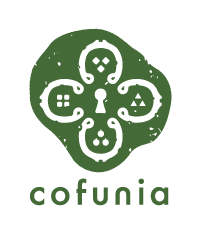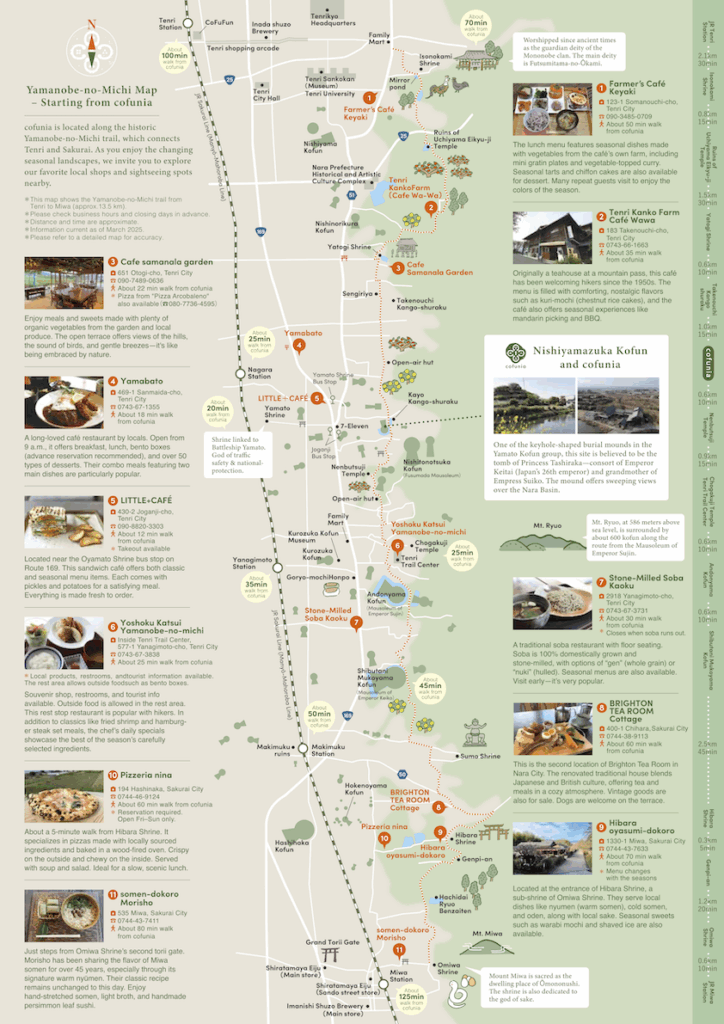Local Area
Where People and Ancient Tombs Coexist
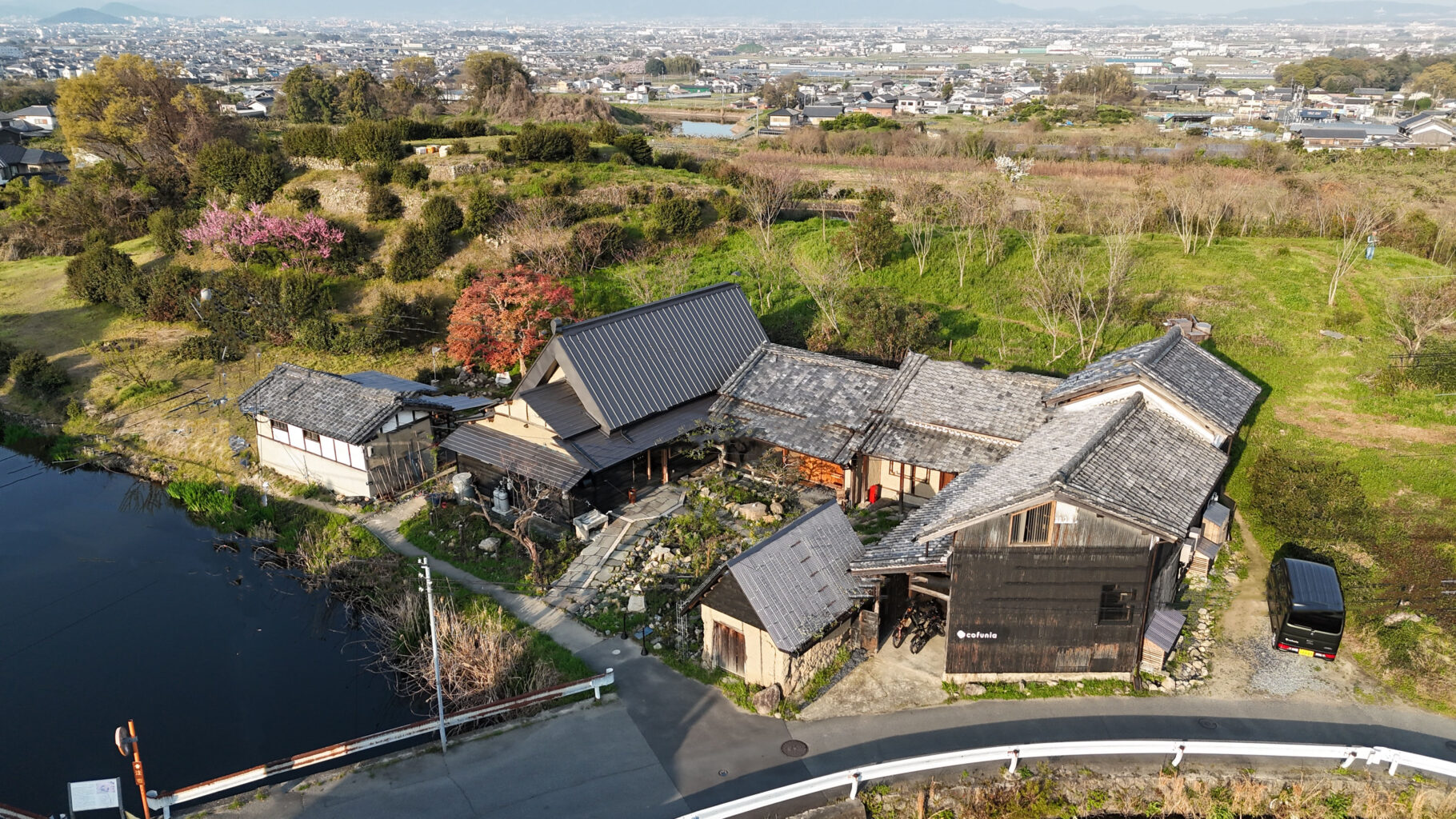
About the Yamanobe-no-Michi Trail & Nishiyamazuka Kofun
Yamanobe-no-Michi – Japan’s Oldest Path
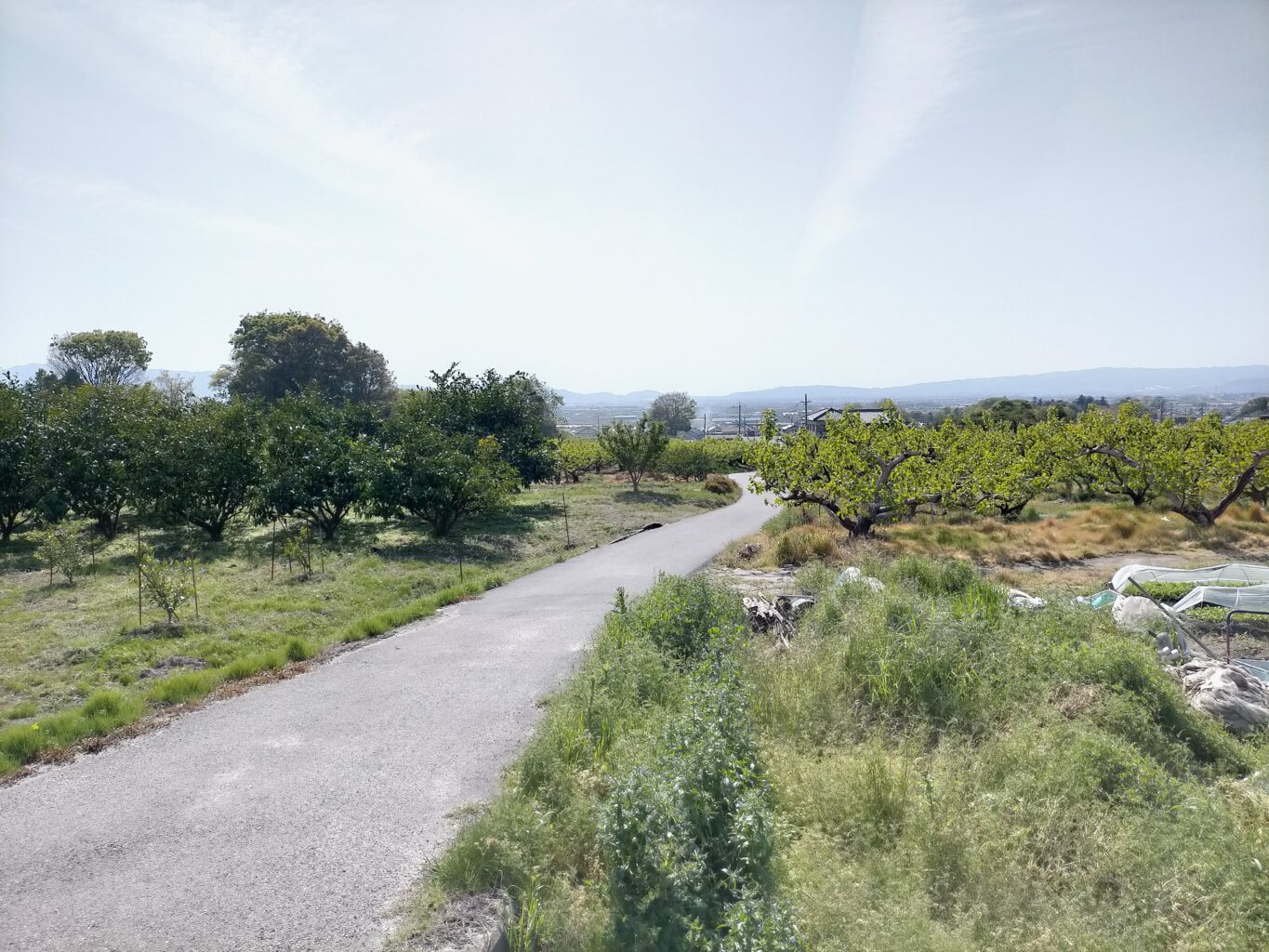
Yamanobe-no-Michi is known as the oldest walking trail in Japan.
This path dates back over one thousand years, and appears in the Kojiki and Nihon Shoki–the country’s oldest chronicles.
This historic road winds through the countryside of Nara, and is lined with spiritual landmarks such as Omiwa Shrine (one of the oldest Shinto shrines in Japan), and Chogaku-ji Temple, a peaceful Buddhist site.
Along the way you’ll also encounter around 40 ancient burial mounds, which are known collectively as the Oyamato Kofun Group. These grassy mounds, called kofun, were built between the 3rd and 7th centuries as tombs for powerful figures of the time.
Today they blend quietly into the landscape, offering a glimpse into Japan’s ancient past.
Walking this path is not only a journey through nature, but also a quiet conversation with history; a place where the past and present gently intertwine.
In spring, cherry trees blossom along the trail.
In summer, you will find yourself surrounded by lush greenery.
In autumn, the leaves are ablaze with fiery colors.
And in winter, a dignified stillness settles over the land.
Each season reveals a new face of this timeless road.
Along the way, you’ll find small teahouses and farm stands run by local residents,
offering handmade dishes and local specialties created from seasonal ingredients.
Through these encounters, enjoy a taste of the everyday life and culture rooted in this land.
Let the path carry you away from the busyness of daily life,
and into a quiet moment to reset your body and mind.
Yamanobe-no-michi walking map
Nishiyamazuka-kofun
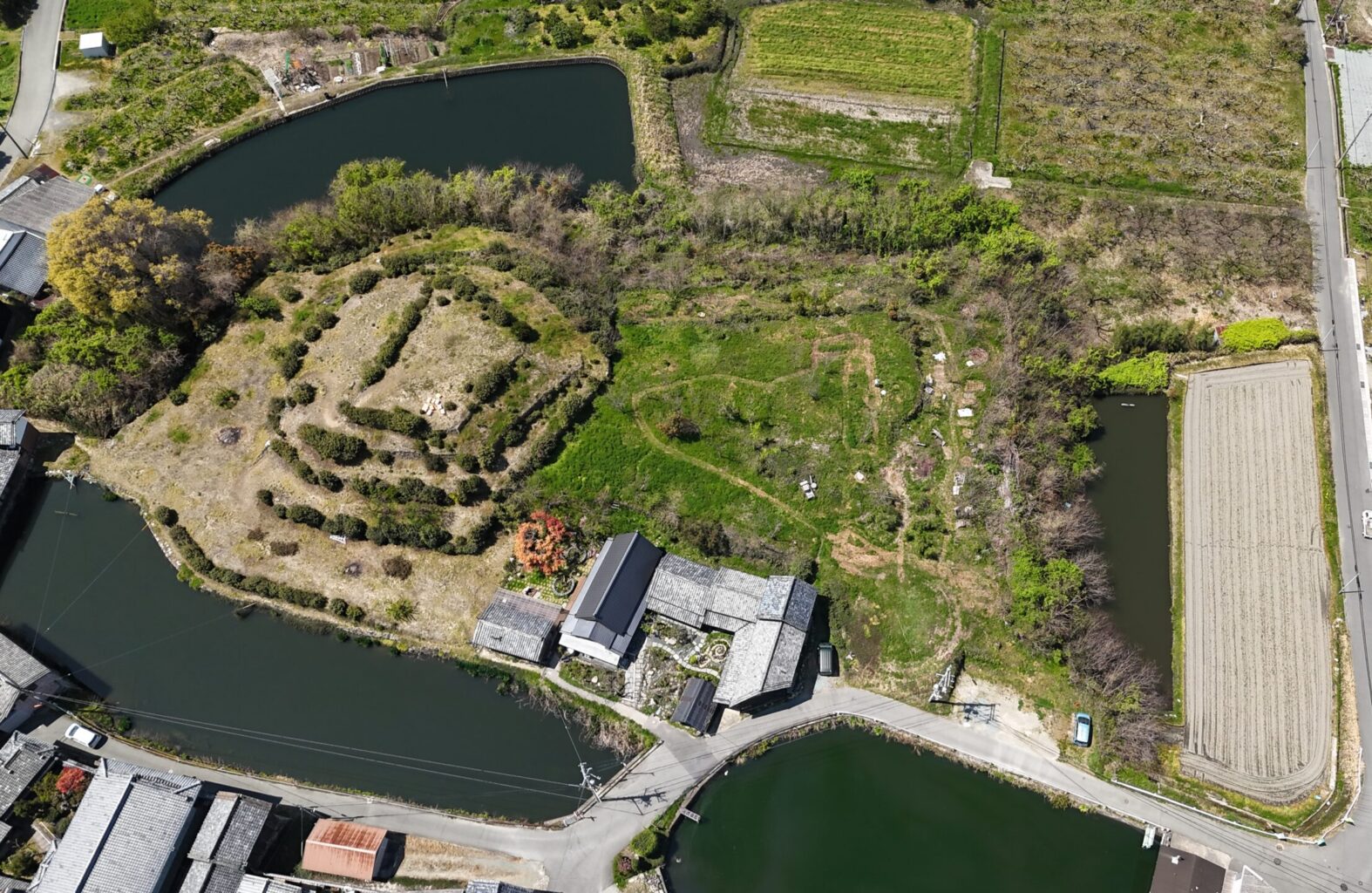
Nestled quietly in the landscape near cofunia, the Nishiyamazuka Kofun is a keyhole-shaped ancient burial mound (kofun) believed to date back to the early 6th century.
It stretches about 114 meters in length, and is thought to be the resting place of Princess Tashiraka, consort of Emperor Keitai (Japan’s 26th emperor) and grandmother of Empress Suiko, the first female emperor of Japan.
A stone coffin was discovered in the rear circular section during the Meiji period, with historical records mentioning the presence of magatama beads, tubular jade ornaments, and fragments of small bells. These artifacts are now missing, however, and the tomb remains preserved and officially unopened .
From the top of the mound, you can enjoy sweeping views of the surrounding landscape:
the Three Mountains of Yamato (a sacred trio in Japanese mythology) to the southwest,
the Kongō Mountains to the west, and the Ikoma Mountains to the north. On a clear day, the sunset from the mound is nothing short of breathtaking.
Our Connection to the Kofun

Living in Harmony with an Ancient Sacred Site
A resting place that quietly teaches us how to live in harmony.
Ancient burial mounds, known as kofun, were chosen as sacred resting places by Japan’s early leaders during their lifetimes.
These sites were carefully selected based on geomantic principles (feng shui) and the natural flow of energy, and were therefore believed to be among the most powerful and harmonious locations.
The land surrounding Nishiyamazuka Kofun, once an orchard, had long been left untended: overgrown, damaged by wildlife, and forgotten.
Because many kofun lie on private property, they often fall outside the scope of public protection and are frequently lost to development.
In order to protect and pass on this historic landscape for future generations, we chose to welcome people here — not as tourists, but as respectful guests — by offering a place for quiet and intentional hospitality.
By caring for this site through our operations, we maintain its landscape, nurture its flora, and preserve the dignity of the kofun as part of our present-day everyday life.
About the Garden
A sensory garden that delights through every season
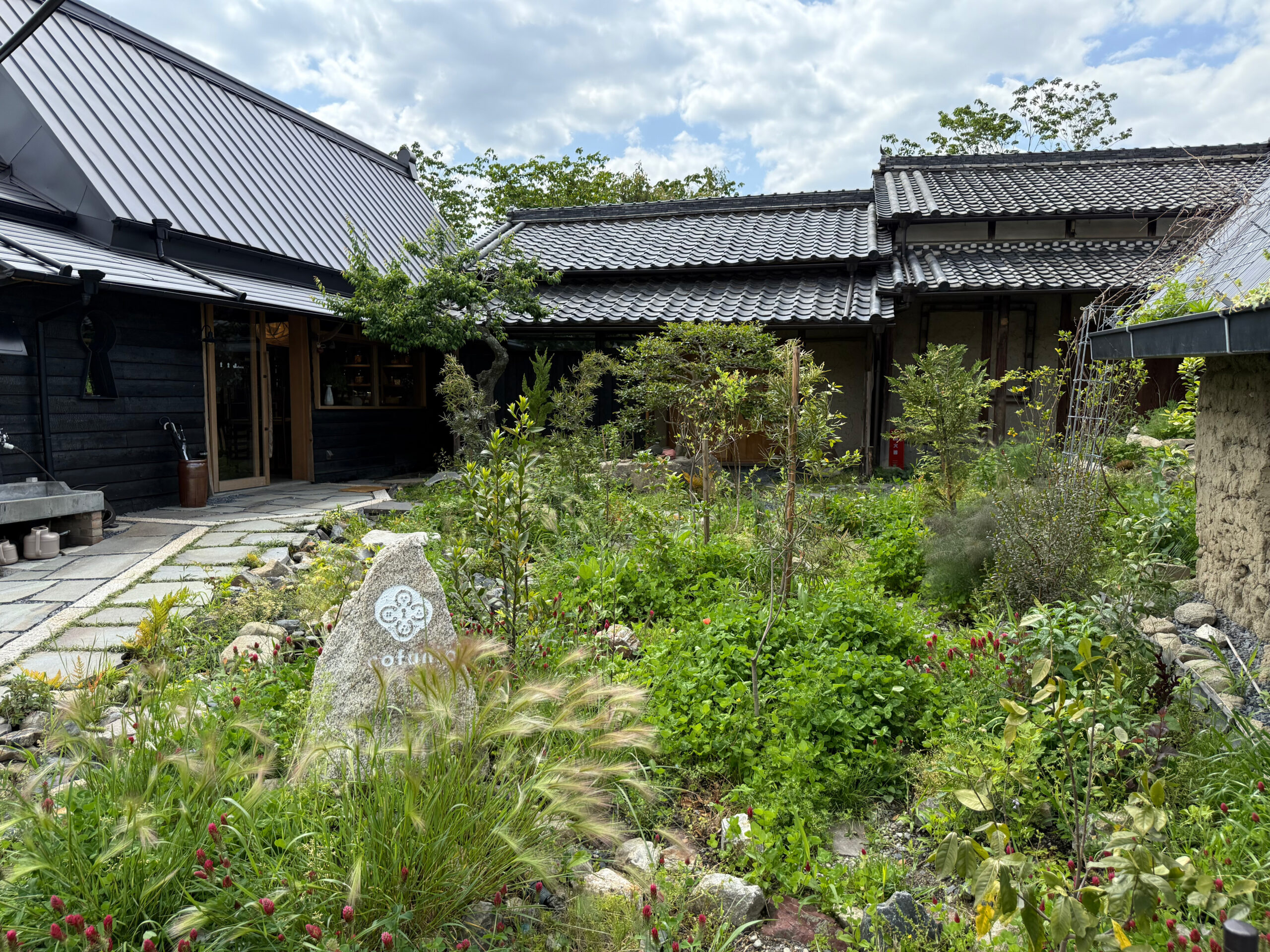
The garden at cofunia is designed to awaken the senses throughout the year.
Fragrances of wildflowers, the texture of leaves, and the sounds of birds and insects: each moment invites quiet connection with the natural world.
Re-used elements from the original property — stones, roof tiles, and even a 70-year-old sink— have been thoughtfully incorporated into the landscape of our inn.
Spiral flower beds, a keyhole-shaped garden, and a biotope pond create a space where plants and wildlife coexist in quiet harmony. Pathways beneath the soil allow air and water to flow naturally, while a green roof planted atop one of the buildings reflects our conversation with nature.
This is not only a garden to look at, but a place to listen, breathe, and feel the wind’s subtle presence. As you step into the garden at cofunia, you may find your senses quietly beginning to return.
How many did you find?
Hidden somewhere in the garden are seven miniature “kofun” — tiny ancient-style burial mounds. Look closely at the stones, the shapes, the way the trees are arranged. These miniature kofun are thoughtfully designed to blend into the landscape, offering a quiet, playful detail to discover during your stay at cofunia. How many can you find?

